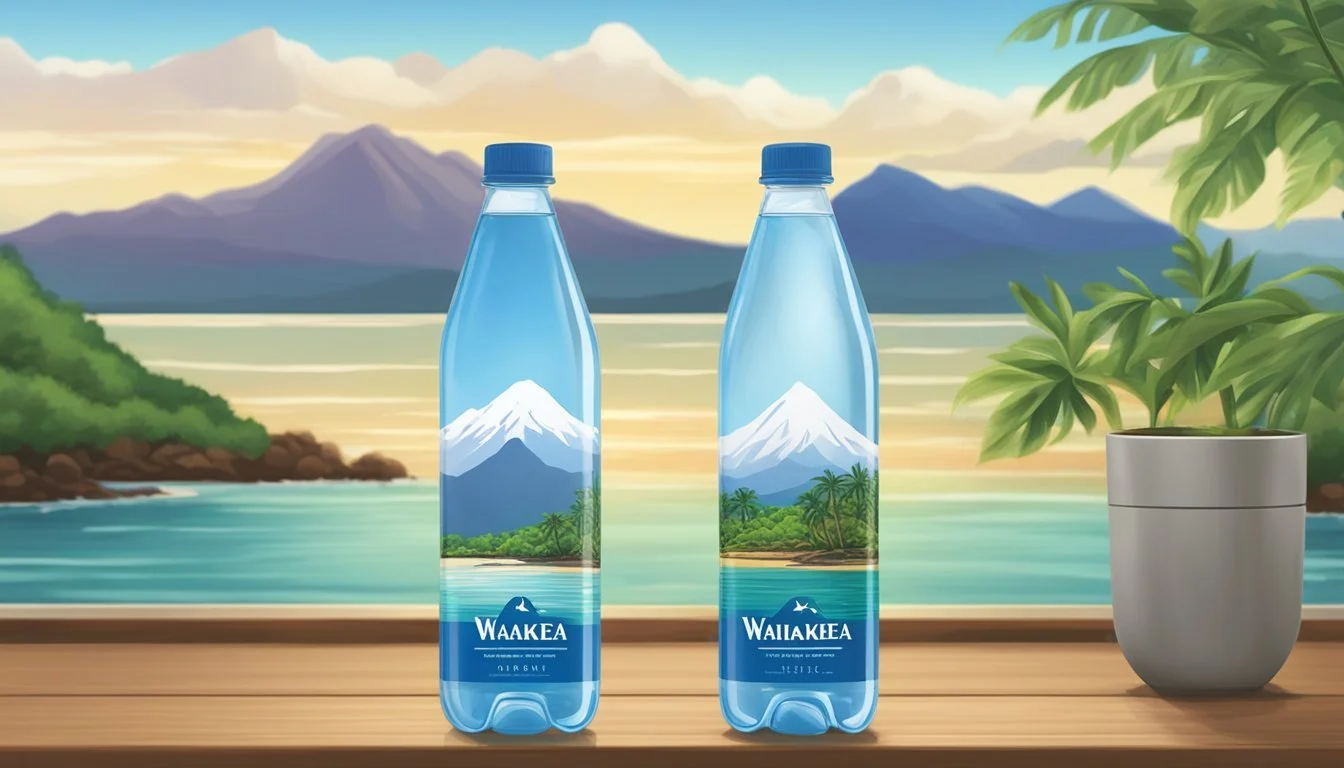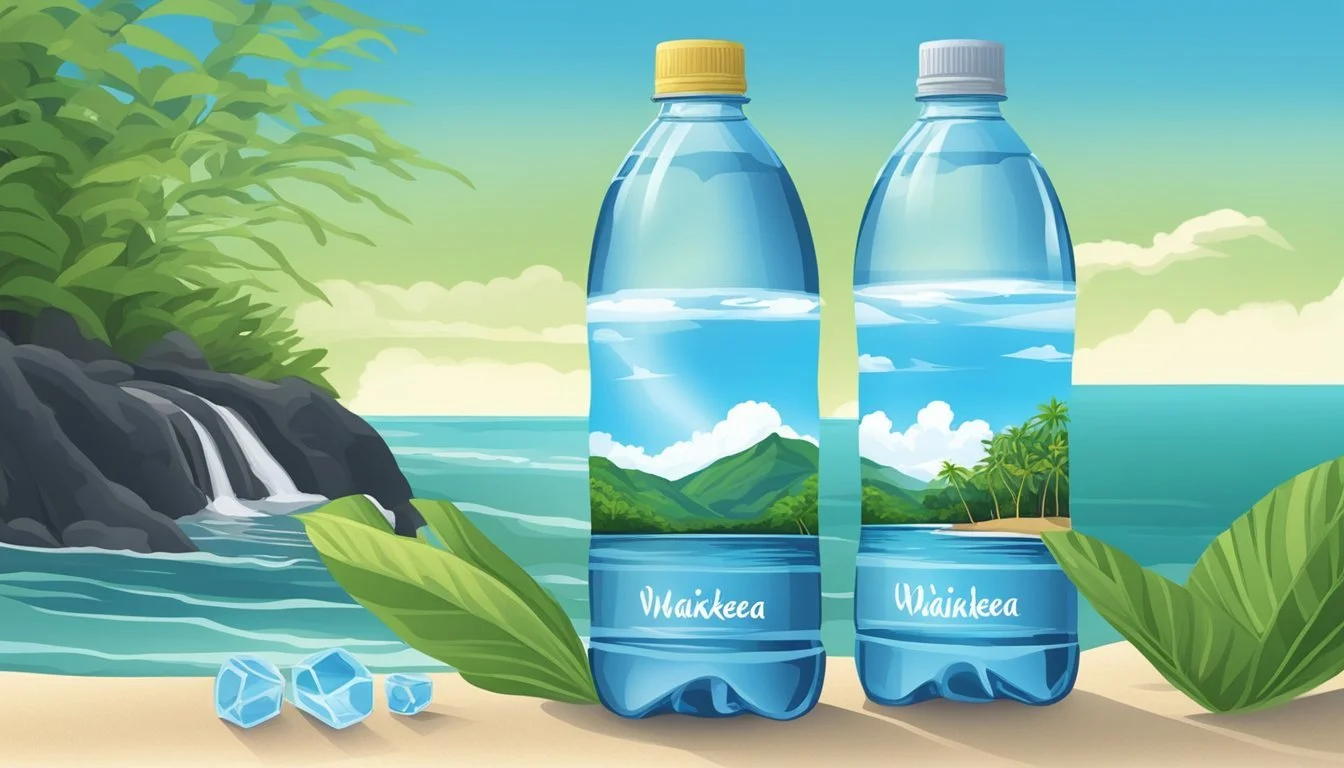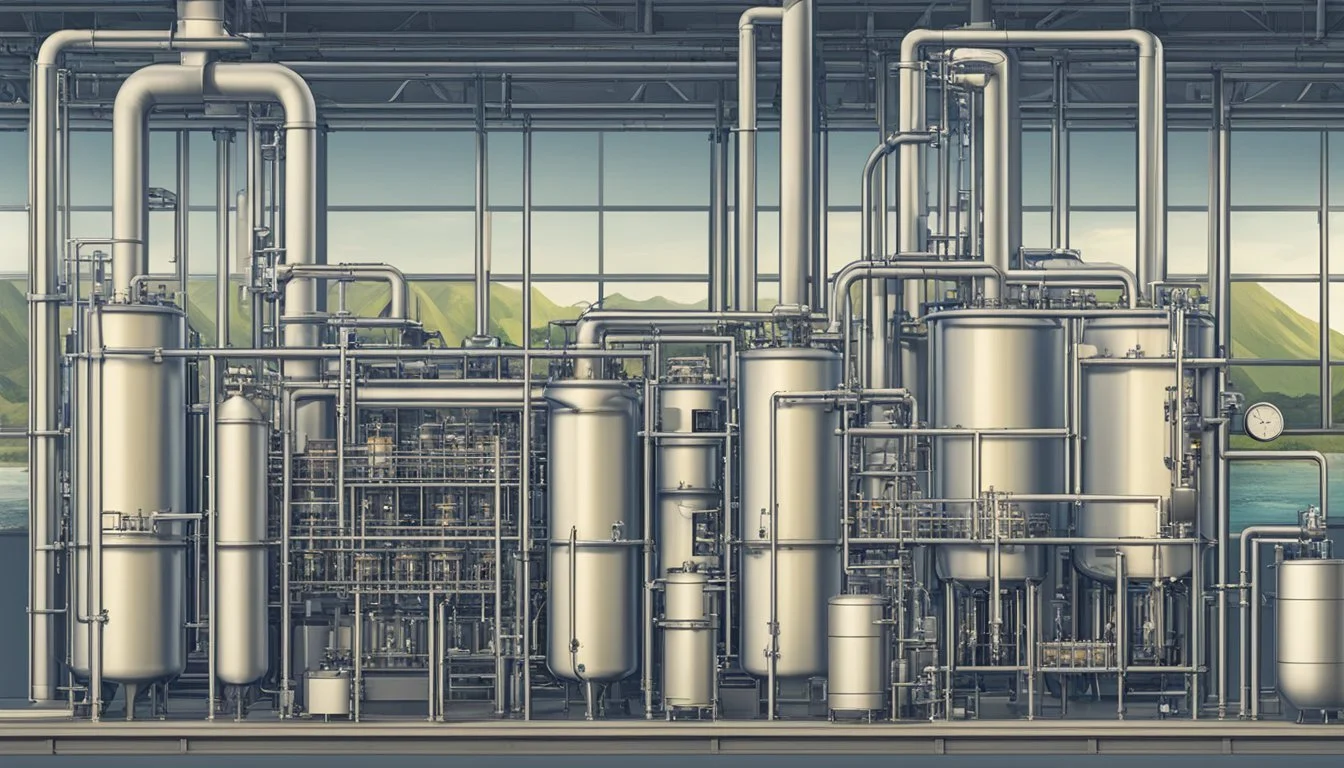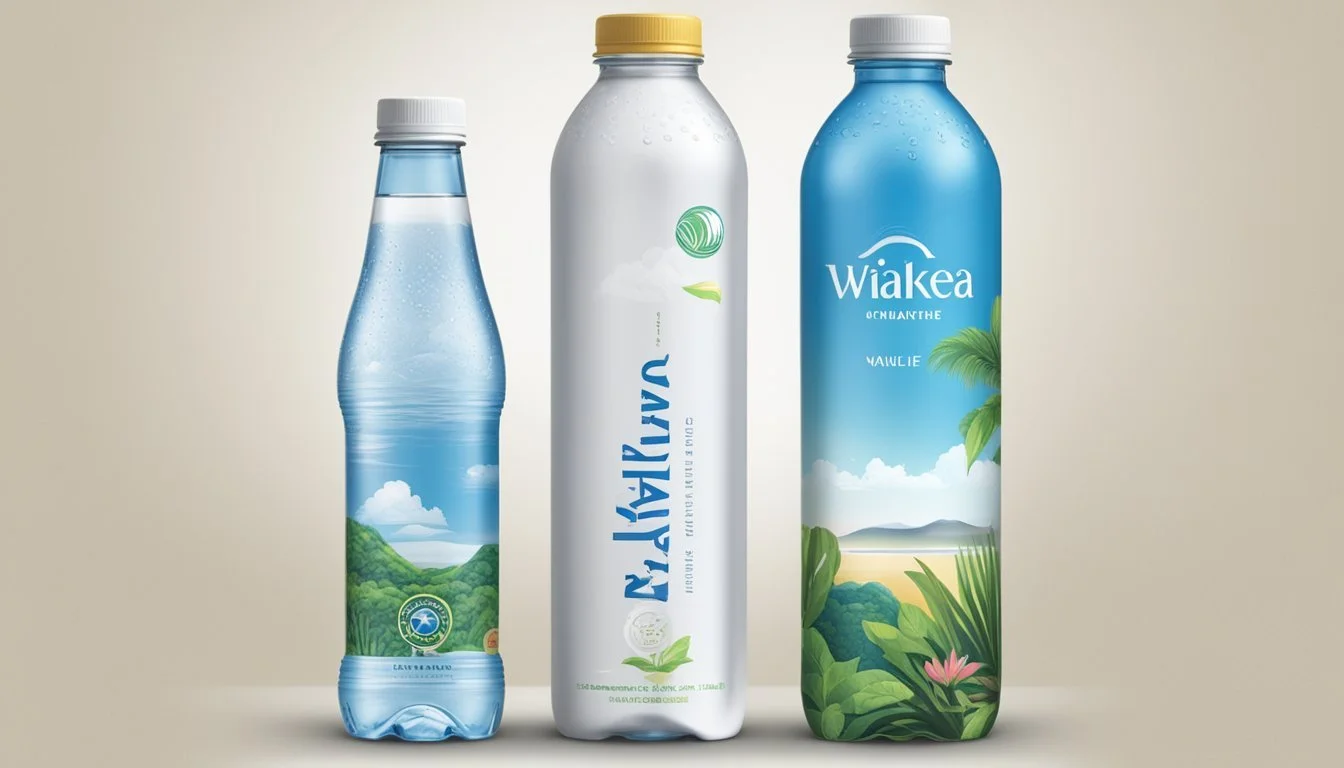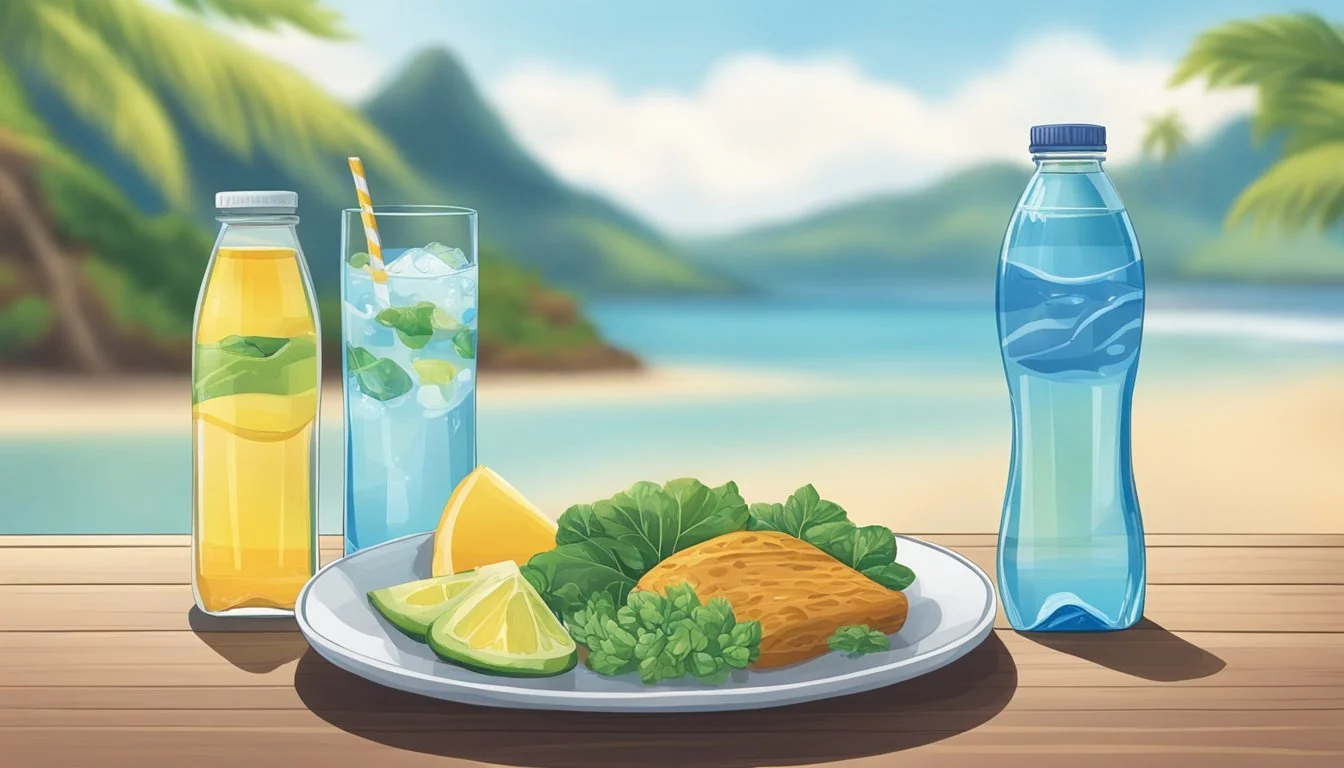Waiakea vs. Pure Life
Which Bottled Water is Better for Your Health and Hydration
Comparing Waiakea and Pure Life, two popular bottled water brands, involves examining their origins, pH levels, and overall health benefits. Waiakea, sourced from a volcanic well in Hawaii, boasts naturally alkaline water with a pH range of 7.6 to 8.2. This unique mineral composition, including electrolytes and essential minerals, often draws health-conscious consumers.
Pure Life, on the other hand, comes from less reputable sources and often fails to match the mineral content found in Waiakea. Given their origins and contents, Waiakea provides better hydration and health benefits compared to Pure Life.
Consumers constantly seek clarity and purity in their bottled water choices. Waiakea’s volcanic filtration and naturally occurring minerals position it as a superior option for those prioritizing both health and taste. Contrasting this with Pure Life’s less impressive profile highlights Waiakea’s distinct advantages in the bottled water market.
Composition and Health Benefits
A detailed analysis of Waiakea and Pure Life bottled water reveals significant differences in their mineral content, pH levels, and health benefits provided by various electrolytes and minerals. These differences can influence your hydration choice based on specific health needs and preferences.
Mineral Content Insights
Waiakea water is notable for its rich mineral composition originating from its volcanic source in Hawaii. It contains essential minerals like calcium, magnesium, potassium, and silica. These minerals support bone health, muscle function, and overall wellness.
Pure Life water, produced by Nestlé, contains added minerals for taste, including calcium chloride, sodium bicarbonate, and magnesium sulfate. While these minerals enhance flavor and provide some health benefits, the quantities are generally lower compared to Waiakea.
Mineral Waiakea Pure Life Calcium 32 mg/l 28 mg/l Magnesium 8 mg/l 5 mg/l Potassium 5 mg/l N/A Silica 30 mg/l N/A
pH Levels and Alkalinity Analysis
Waiakea boasts a naturally alkaline pH range of 7.6 to 8.2. This alkalinity helps neutralize acidity in the body, which may aid in reducing acid reflux and improving digestion.
Pure Life has a pH closer to neutral, typically around 6.5 to 7.5. While it may not offer the same alkaline benefits, it still provides adequate hydration and is a safe, clean water source.
Water Brand pH Range Waiakea 7.6 - 8.2 Pure Life 6.5 - 7.5
Health Effects of Electrolytes and Minerals
The electrolytes and minerals in Waiakea contribute significantly to health. Calcium and magnesium promote bone strength and muscle function, while potassium supports heart health. Silica may benefit skin, hair, and nails.
Pure Life's mineral content focuses on enhancing flavor and providing basic nutritional benefits. Calcium chloride and magnesium sulfate help maintain hydration and muscle function, although in lower concentrations compared to Waiakea.
Overall, Waiakea's higher mineral content and alkaline pH offer more substantial health benefits, particularly for those with specific nutritional needs. Pure Life remains a good choice for everyday hydration, emphasizing purity and taste.
Source and Filtration Process
Waiakea and Pure Life are both popular choices, but their source and filtration methods greatly differ, influencing taste and purity. Understanding these differences can help consumers make an informed decision.
Natural Spring Water vs. Purified Water
Waiakea sources its water from a volcanic well in Hawaii. The water filters through thousands of feet of porous volcanic rock, naturally enhancing its mineral content. This results in naturally alkaline water with a pH between 7.6 and 8.2. The water is rich in electrolytes and minerals.
Pure Life, on the other hand, is purified water. It's primarily sourced from municipal supplies, or tap water, which undergoes rigorous purification processes to ensure safety. The source may vary, but the goal is to achieve consistency in taste and quality. Unlike Waiakea's natural spring water, Pure Life relies on engineered purification.
Filtration Techniques and Purity
Waiakea boasts a natural filtration process. The volcanic rock acts as a natural filter, providing a unique mineral composition without the need for extensive treatment. This process preserves the water’s natural properties and sustains its purity.
Pure Life employs reverse osmosis, a sophisticated filtration technique that removes impurities and contaminants. This multi-step process includes carbon filtration, distillation, and ultraviolet light treatment. While effective in purifying water, it often removes beneficial minerals, necessitating re-mineralization to improve taste.
Impact of Source on Taste
The source significantly affects the taste profile of bottled water. Waiakea's volcanic origin imparts a distinctive, slightly sweet flavor due to the natural minerals present. Consumers often notice a smooth mouthfeel and refreshing taste, attributed to the natural alkaline content.
Pure Life, being purified water, tends to have a neutral taste. The reverse osmosis process strips the water of most contaminants, and any minerals added back are standardized, leading to a consistent but less distinctive flavor. This could appeal to those preferring a clean, straightforward water taste.
By understanding these aspects, consumers can better appreciate the unique qualities and preferences each brand offers, based on their source and filtration processes.
Environmental Impact and Sustainability
Understanding the environmental impact and sustainability practices of Waiakea and Pure Life is crucial. Each brand employs unique methods to reduce their ecological footprint, from the materials used in their bottles to the sustainability efforts surrounding their entire operations.
Bottling Materials and Waste
Waiakea utilizes 100% recycled polyethylene terephthalate (rPET) for their bottles. This choice significantly lowers energy usage in production and reduces plastic waste by reusing existing materials. The bottles are also designed to be fully recyclable, further promoting a circular economy approach to plastic usage.
Pure Life, on the other hand, largely uses virgin plastic (PET) in their bottles. Although their bottles are recyclable, the use of new plastic rather than recycled materials contributes more significantly to environmental pollution. Pure Life has faced criticism for the relatively low percentage of recycled content in their packaging.
Sustainability Initiatives of Brands
Waiakea has received CarbonNeutral certification, demonstrating a commitment to reducing their carbon footprint. Their initiatives include supporting electrification projects in rural areas, investing in reforestation programs, and promoting water conservation. They also participate in community education and awareness campaigns about environmental sustainability.
Pure Life promotes sustainable practices through initiatives such as lightweighting their bottles to use less plastic. However, compared to Waiakea, their sustainability programs are less extensive and have not achieved carbon-neutral certification. They focus primarily on improving recycling rates and reducing packaging waste but do not emphasize broader environmental or community-focused projects.
Water Source Conservation
Waiakea sources its water from the Mauna Loa volcano in Hawaii, which is known for its natural filtration through volcanic rock. The brand emphasizes sustainable extraction practices to ensure the replenishment and protection of this vital resource. They strictly monitor their extraction rates to avoid depleting the source, aligning with their overall commitment to environmental stewardship.
Pure Life, meanwhile, sources water from various locations, including both spring and municipal sources. While they follow standard regulations to ensure water quality and safety, there is less transparency and focus on the sustainability of their water sources compared to Waiakea. Their conservation efforts are generally less highlighted in their branding and communications.
By comparing these specific aspects, consumers can better understand the environmental philosophies and practices of Waiakea and Pure Life, aiding in more informed decisions.
Consumer Experience and Accessibility
Waiakea and Pure Life offer different experiences in terms of cost, distribution channels, and packaging convenience. This comparison sheds light on these important factors to help consumers make an informed choice.
Comparing Costs and Value
Waiakea Water tends to be priced at a higher range due to its source and mineral content. It is often marketed as a premium product. Pure Life, on the other hand, is positioned as a more budget-friendly option, widely available in bulk quantities.
Waiakea offers added values such as naturally occurring electrolytes and a high pH level. Pure Life, being more economical, is suitable for those who prioritize affordability. While Waiakea targets health-conscious individuals, Pure Life appeals to cost-conscious consumers.
Distribution Channels and Availability
Waiakea Water might be found in selected specialty stores, organic markets, and through online retailers. Its presence in conventional grocery stores might be limited compared to Pure Life.
Pure Life is readily available in major grocery chains, convenience stores, and various online platforms. This makes it more accessible for the average consumer. Additionally, Pure Life has a strong international distribution network, ensuring availability in multiple regions.
Packaging and Convenience
Waiakea is packaged in eco-friendly, BPA-free plastic bottles which emphasize sustainability. This aligns well with consumers who are environmentally conscious. The design of Waiakea bottles is sleek which adds to its appeal.
Pure Life also uses BPA-free bottles, but its packaging focuses on practicality and cost-efficiency. Available in various sizes, from small single-serve bottles to large family packs, Pure Life offers greater convenience for different needs.
Waiakea’s sustainability efforts and elegant packaging stand out, whereas Pure Life’s versatility in packaging options caters to a broader audience. This difference highlights the brands’ focus areas—premium experience vs. widespread accessibility.
Quality Assurance and Certifications
Waiakea and Pure Life both emphasize the safety and quality of their bottled water through rigorous testing and adherence to industry standards. They ensure their products are free from harmful contaminants and maintain high levels of purity and safety.
Testing for Contaminants and Safety
Both Waiakea and Pure Life conduct extensive testing to guarantee their water is safe to drink. Regular assessments for contaminants such as lead, arsenic, fluoride, and chlorine are performed to meet stringent safety criteria.
Waiakea sources its water from volcanic wells in Hawaii, naturally filtering it through porous volcanic rock, which helps eliminate pollutants. They further test for total dissolved solids and maintain a consistent pH level.
Pure Life undergoes a meticulous purification process that includes reverse osmosis and multi-stage filtration. This process targets and removes various contaminants to ensure the water meets safety standards. Both brands share transparent testing results, providing confidence in their product's safety.
Certifications and Industry Standards
Waiakea and Pure Life both achieve several certifications, highlighting their commitment to quality standards. Waikea is notable for being the first U.S. bottled water certified Carbon Neutral, emphasizing its dedication to environmental sustainability.
Waiakea holds certifications from recognized bodies such as the NSF International and adheres to FDA guidelines, ensuring safe drinking water. They also donate over 5% of their revenue to nonprofits, supporting both health and sustainability initiatives.
Pure Life also meets high industry standards and is certified by the National Sanitation Foundation (NSF) and International Bottled Water Association (IBWA). These certifications affirm their compliance with strict safety protocols and quality benchmarks.
Both brands prioritize consumer trust through their rigorous quality assurance measures and adherence to industry standards, ensuring their bottled water is safe and pure.
Taste Profile and Culinary Use
Both Waiakea and Pure Life offer unique taste experiences that cater to different culinary needs and consumer preferences. This section examines how these bottled water brands perform in fine dining and everyday cooking, as well as what consumers think about their flavors.
Culinary Experiences with Bottled Water
Waiakea Water has a naturally alkaline profile, with a pH range of 7.6 to 8.2. Its volcanic origins give it a unique mineral composition that enhances the taste. Chefs often recommend Waiakea for its mild, smooth flavor, making it a great choice for fine dining settings.
For culinary use, Waiakea excels in dishes that require high-quality water to maintain the integrity of the flavors, such as soups, broths, and delicate sauces.
Pure Life, on the other hand, is a more versatile option for everyday cooking. Its neutral taste ensures it does not alter the flavors of the dishes it is used in. This brand is often favored for boiling pasta, cooking vegetables, and any other recipes where the water flavor should remain neutral.
Because of its wide availability and consistent quality, Pure Life is a reliable choice for most home kitchens.
Consumer Reviews and Preferences
Waiakea is often praised for its clean, crisp taste and its eco-friendly production methods, such as being certified Carbon Neutral. Consumers appreciate its purity and the slight mineral aftertaste, which some find refreshing.
Many fine dining establishments prefer Waiakea for its natural alkalinity and unique flavor profile, which complements gourmet meals.
Pure Life receives favorable reviews for its accessibility and consistency. It is a popular choice among families and individuals who prioritize reliable quality at an affordable price. While it lacks the distinctive mineral flavor of Waiakea, its neutrality is seen as a benefit in many culinary applications.
In taste tests, Pure Life is sometimes perceived as less exciting compared to premium brands like Smartwater or Essentia, but its wide acceptance and practicality often make up for that.
Ultimately, personal preference plays a significant role, with some preferring the distinct taste of Waiakea and others opting for the simplicity of Pure Life.
More About Waiakea
Icelandic Glacial vs Waiakea: Which Bottled Water is Better?
Mountain Valley Spring Water vs Waiakea: Which Bottled Water is Better?
Waiakea vs Kirkland Signature: Which Bottled Water is Better?
Waiakea vs Richard's Rainwater: Which Bottled Water is Better?
Waiakea vs Whole Foods Italian Still Mineral water: Which Bottled Water is Better?
More About Pure Life
Cascade Mountain vs Pure Life: Which Bottled Water is Better?
Hawaii Volcanic vs Pure Life: Which Bottled Water is Better?
Hawaiian Springs vs Pure Life: Which Bottled Water is Better?
Icelandic Glacial vs Pure Life: Which Bottled Water is Better?
Nestle Pure Life vs Pure Life: Which Bottled Water is Better?
Pure Life vs Kirkland Signature: Which Bottled Water is Better?
Pure Life vs Whole Foods 365: Which Bottled Water is Better?
Richard's Rainwater vs Pure Life: Which Bottled Water is Better?
Solan de Cabras vs Pure Life: Which Bottled Water is Better?
Talking Rain AQA vs Pure Life: Which Bottled Water is Better?
Whole Foods Italian Still Mineral water vs Pure Life: Which Bottled Water is Better?

